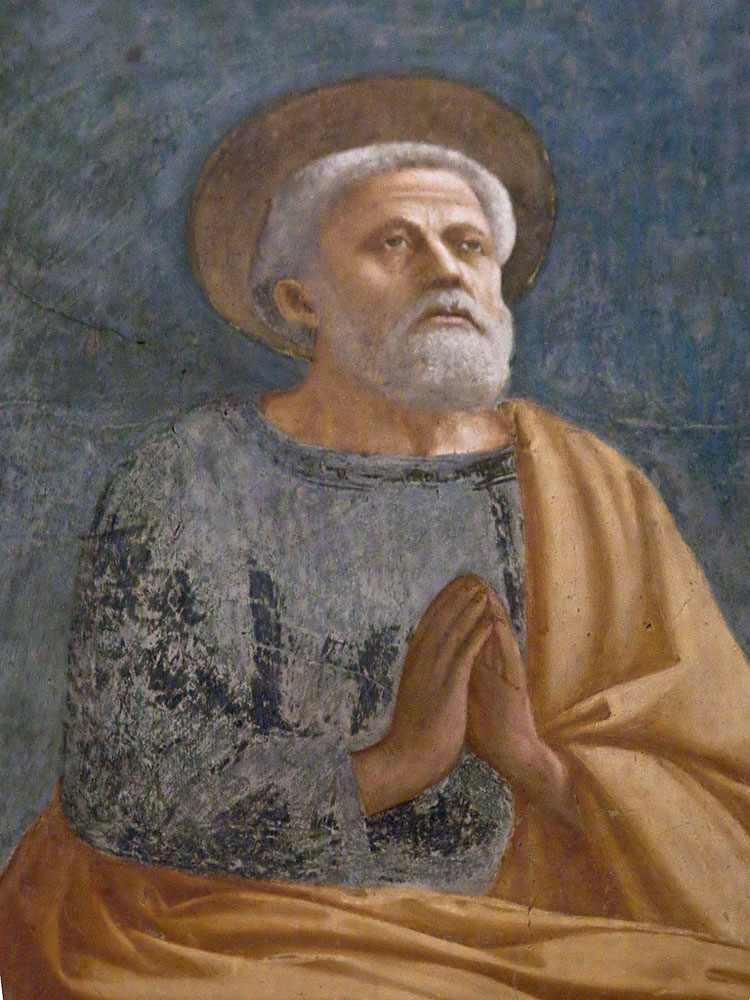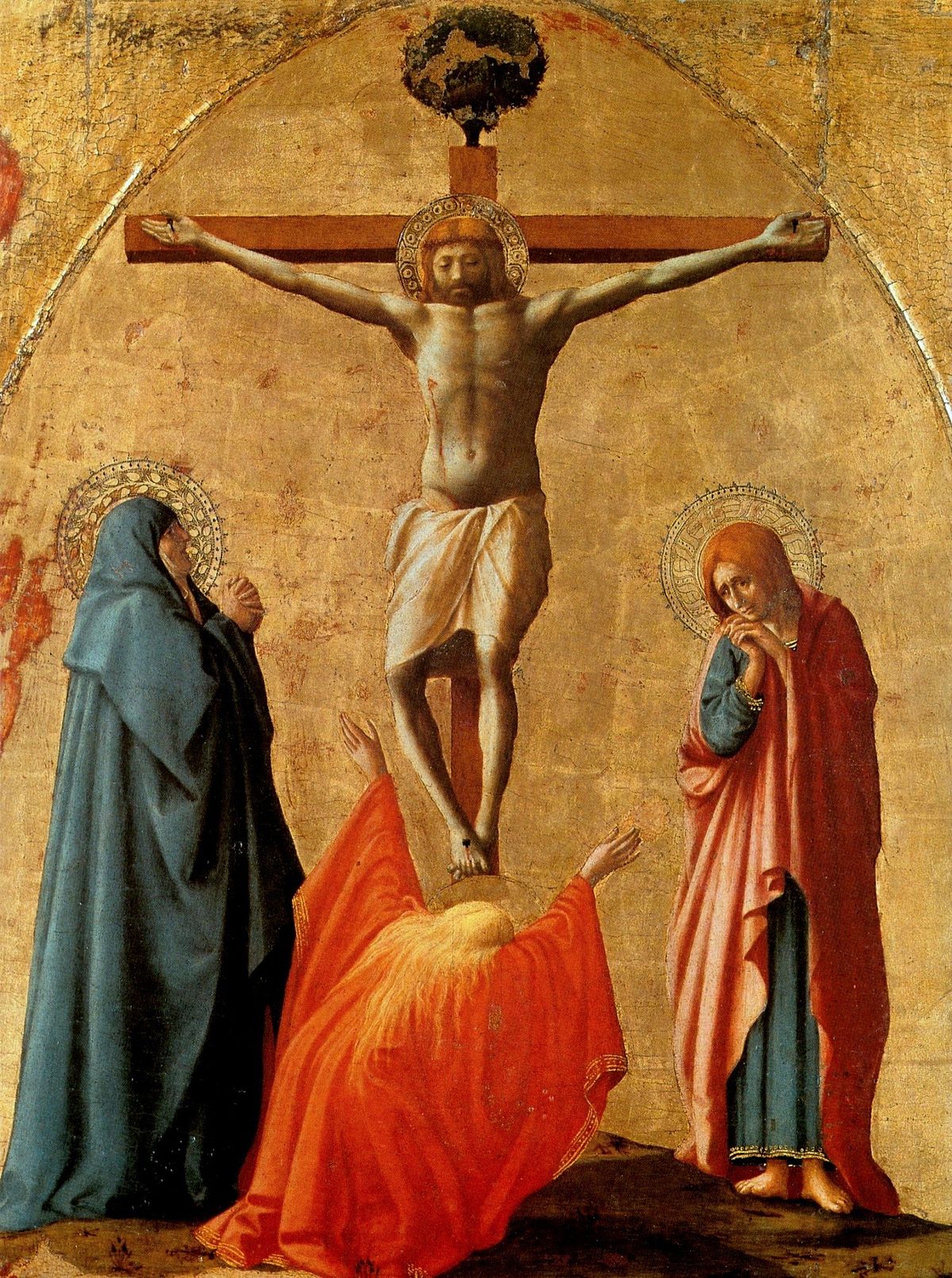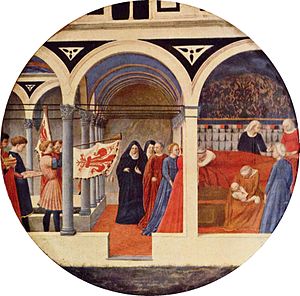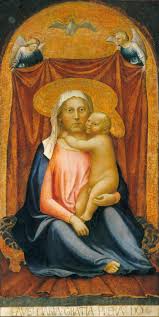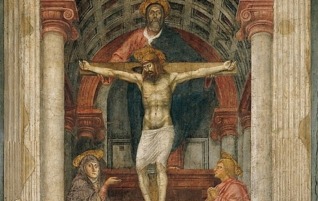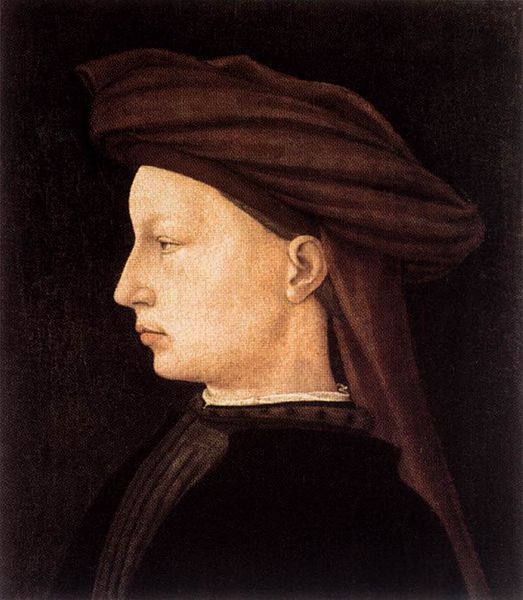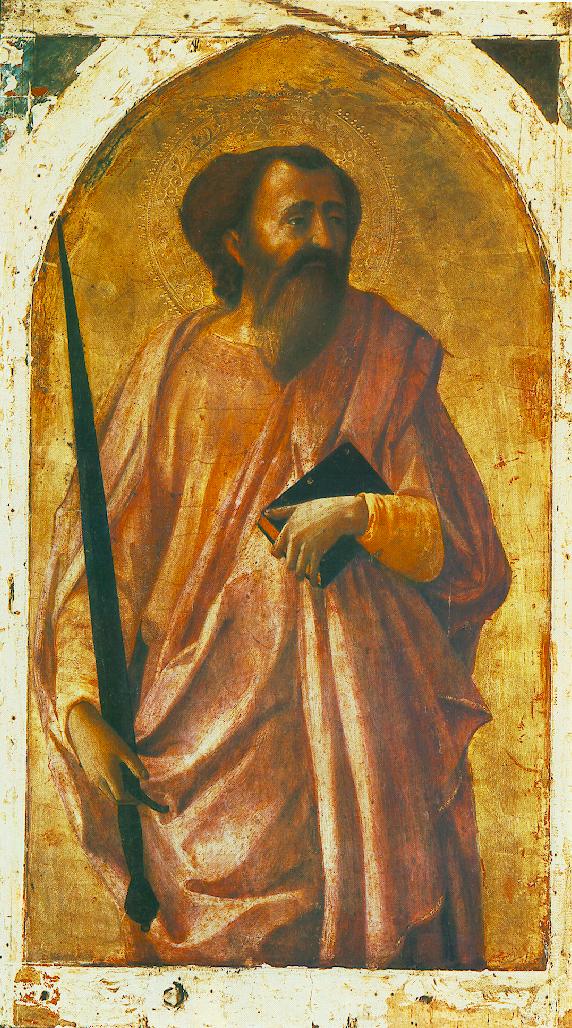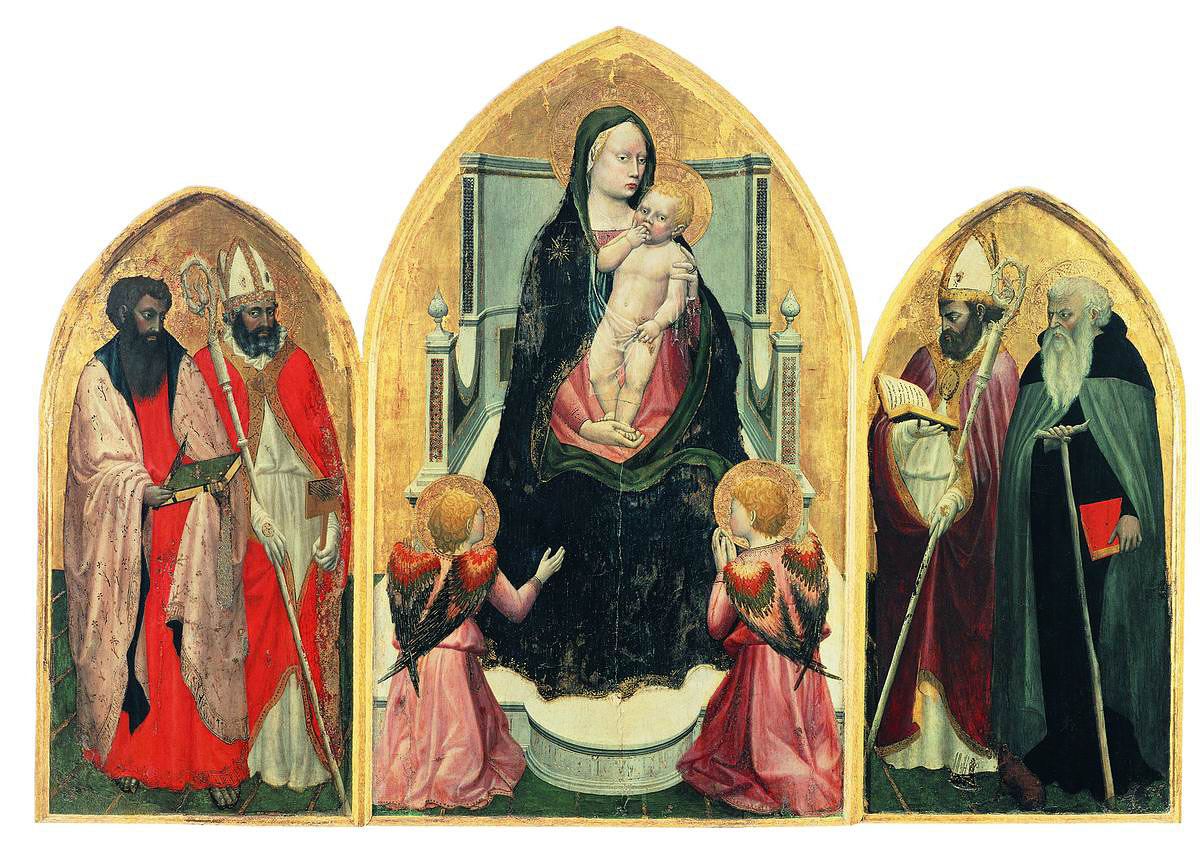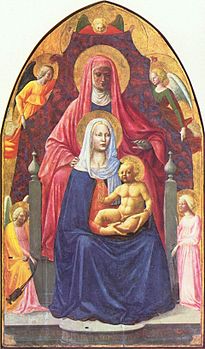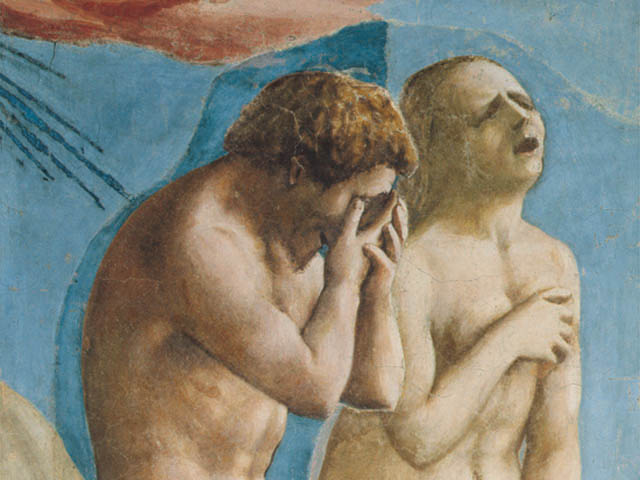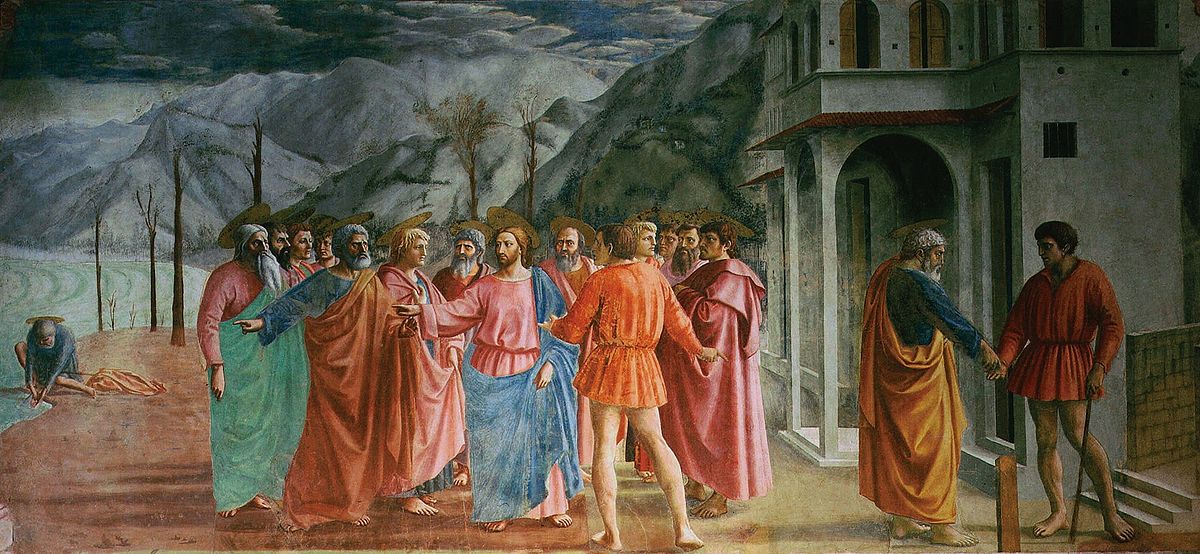- Overview
-
Masaccioborn Tommaso di Ser Giovanni di Simone, was a Florentine artist who is regarded as the first great Italian painter of the Quattrocento period of the Italian Renaissance. According to Vasari, Masaccio was the best painter of his generation because of his skill at imitating nature, recreating lifelike figures and movements as well as a convincing sense of three-dimensionality. Masaccio died at twenty-six and little is known about the exact circumstances of his death.
The name Masaccio is a humorous version of Maso (short for Tommaso), meaning "clumsy" or "messy" Tom. The name may have been created to distinguish him from his principal collaborator, also called Maso, who came to be known as Masolino ("little/delicate Tom").
- Career
-
- Masaccio’s first painting was the ‘San Giovenale Triptych’ that was completed in 1422. The painting was meant for the Church of San Giovenale and shows Madonna in the company of angels. The particular painting also shows the sort of influence the Florentine school of painting had on Masaccio as a young artist.
- In 1425, Masaccio created one of his most famous works in the form of ‘The Expulsion From the Garden of Eden’ that depicts the expulsion of Adam and Eve from the Garden of Eden and the most important aspect of the painting are the expressions on the faces of the figures. The painting had a deep influence on Michelangelo. Masaccio completed another famous painting titled ‘The Tribute Money’ in the same year.
- Masaccio got the commission to paint the altarpiece at Church of Santa Maria del Carmine located in Pisa in the year 1426 and it was one of the most important commissions of his career. There were many different panels in the altarpiece and although many of the panels were lost, the central one featuring ‘Madonna and the Child’ is regarded by critics as the most important one from the artistic perspective.
- In 1427, Masaccio started work on his most famous work; the ‘Holy Trinity’ at the Santa Maria Novella Church in Florence. The ‘Trinity’ comprises of the Holy Spirit and the father and son in the fresco. The dove in the work is what represents the Holy Spirit and it is regarded as his masterpiece in a career in which he produced many.
- After producing ‘The Nativity’, Masaccio left for Rome and some historians believe that he helped his long time artistic partner Masolino with his work.
- Masaccio’s first painting was the ‘San Giovenale Triptych’ that was completed in 1422. The painting was meant for the Church of San Giovenale and shows Madonna in the company of angels. The particular painting also shows the sort of influence the Florentine school of painting had on Masaccio as a young artist.
- On View
-
- National Gallery of Art East Building, Washington D.C.

